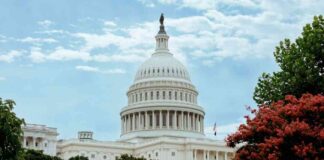Senator Hagerty from Tennessee recently introduced a new stablecoin regulation framework to address the growing demand for US Treasury assets. The proposed legislation aims to provide clear guidelines for stablecoin issuers, balancing growth with consumer protection.
The key provisions of the draft legislation include exemptions for stablecoin issuers with less than $10 billion in total assets from federal oversight, allowing them to operate under state regulations. Those exceeding the threshold can request a waiver to continue under state oversight. The legislation also requires issuers to maintain reserves on a one-to-one basis with the stablecoins they issue, consisting of assets like US currency, Treasury bills, or other secure financial instruments.
Moreover, the bill designates the Federal Reserve as the primary regulator for depository institution issuers, while the Office of the Comptroller of the Currency (OCC) will oversee nonbank entities. These agencies will monitor compliance, risk management, and operational practices to ensure safety and soundness.
In terms of consumer protection, the legislation emphasizes the segregation of customer assets from issuer assets to prevent misuse in case of insolvency. It prohibits the rehypothecation of customer assets held in reserve, ensuring their availability for redemption. Custodial or safekeeping service providers must also comply with strict requirements to safeguard consumer assets from financial risks.
Furthermore, the bill encourages cooperation between state and federal regulators to promote innovation within the stablecoin space. It also includes provisions for reciprocal arrangements with foreign jurisdictions to facilitate international transactions under similar regulatory regimes.
Overall, Senator Hagerty’s proposed legislation aims to unlock the full potential of stablecoins by providing regulatory clarity, promoting transparency, and safeguarding consumer interests. This effort reflects a significant step towards integrating digital assets into the broader financial system, enhancing payment systems, and supporting US Treasury demand.














